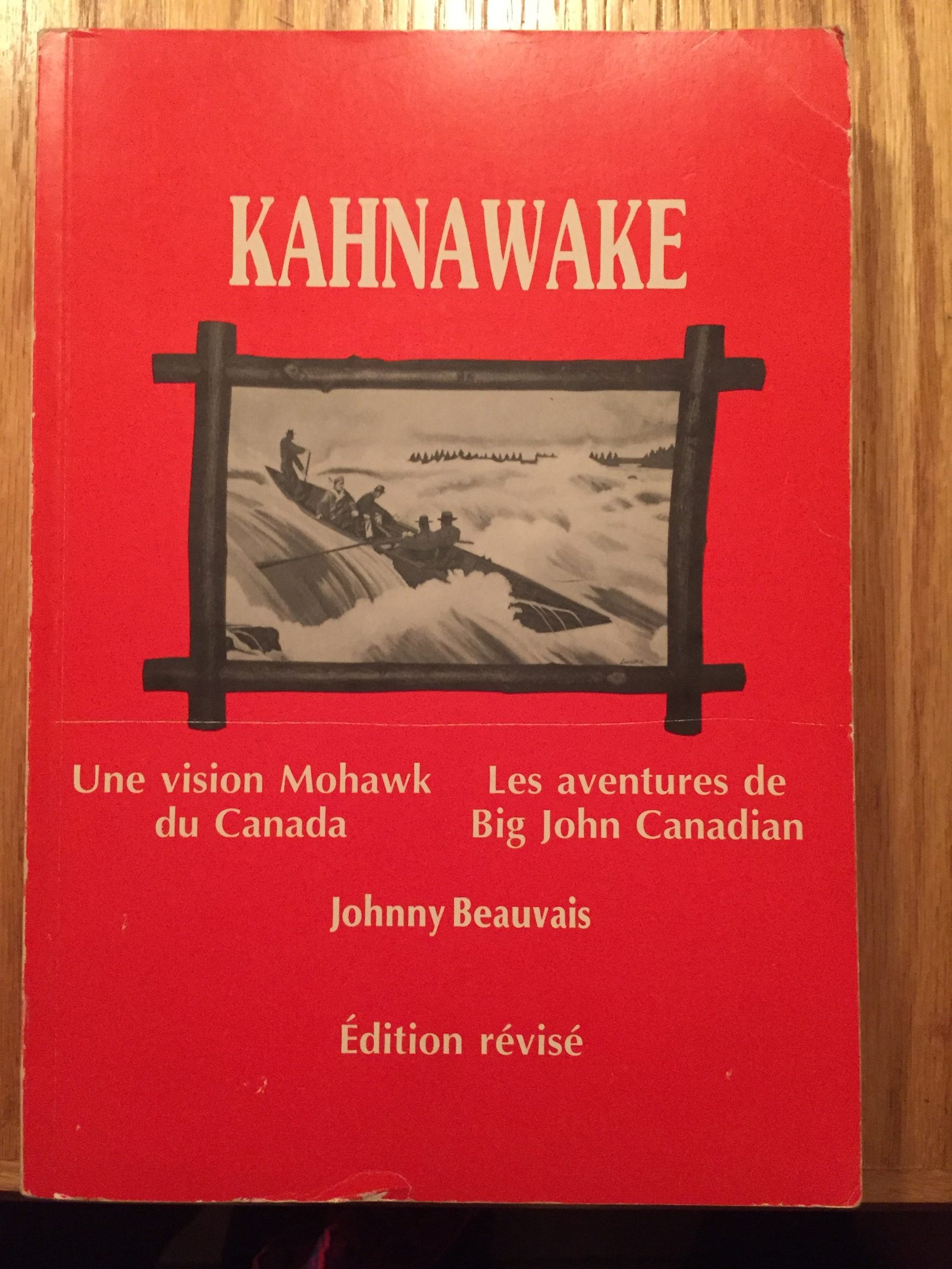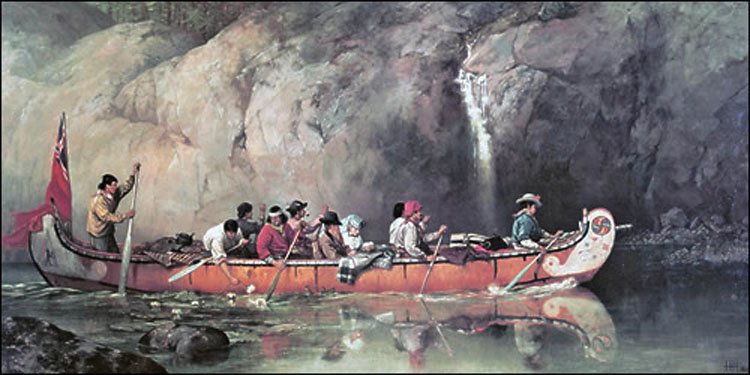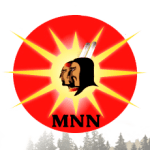
Please post & distribute.
MNN. 8 Nov. 2019. In 1884 the British soldiers lead by British General Gordon were trapped in Khartoum in Egypt. They needed supplies, food and ammunition.

No one could get through the treacherous rapids on the Nile known as the “Cataracts”. Only the kanionkehaka [Mohawks] of Kahnawake were known for their skill in shooting such dangerous rapids. They lived by the Lachine Rapids, the strongest in the world. They expertly took huge cargoes in long canoes over some of the world’s most treacherous rapids. 59 Mohawks volunteered for this dangerous mission in Egypt. 16 were lost. They took their long canoes to shoot the rapids on the Nile. They got to Khartoum. Everybody there had been slaughtered.

MOHAWKS EXPERTLY TRAVERSE THE DEADLY FAST WATER AND ROCKS.
GUEST STORY: “Mighty Indigenous Warriors: From Egypt to the First World War
By Elizabeth Kawenaa Montour and Sara Chatfield
When First Nations, Inuit and Métis Nation were recruited in 1914 to fight in the First World War, enlistees were not aware of the new reality of 20th-century warfare. As a prelude to the First World War, in 1884, approximately 56 Kanienkenha:ka (Mohawk), 30 Ojibway and 19 Métis men were recruited for Britain’s six-month Nile expedition in Egypt totalling 400 men. The men were chosen for their strength, endurance, and skill in handling boats and rafts—qualities that were needed to navigate up the numerous cataracts and rapids of the Nile River.
They did not see active battle, as they arrived two days after the city of Khartoum, Sudan had fallen, and British Major Charles G. Gordon had been killed. The expedition returned with the loss of 16 men and stories of what they had seen. Along their journey on the Nile, they saw monolithic temples and statues carved out of hillsides at Abu Simbel, the Sphinx of Giza, the pyramids, exotic markets and Egyptian life in Cairo.
Canadian voyageurs in front of the Parliament Buildings, a detail from the “Canadian Nile Contingent,” 1884. (c002877)
Three decades later, their next involvement in an overseas military expedition was with the Canadian Expeditionary Forces (CEF) in the First World War. It was an opportunity for First Nations, Inuit and Métis Nation soldiers to see the world, and to prove their courage and combat skills. Soldiers were facing a major change in combat style and warfare. The new reality of war involved the use of chemical warfare, machine guns, fighter aircraft, armoured vehicles, and trench warfare.
Our latest Co-lab challenge, Correspondence regarding First Nations veterans returning after the First World War, illustrates some Indigenous peoples’ experiences during the war, touches upon how their communities coped during their absence, and gives information about their lives after they returned home. These documents provide us with information that the Personnel Records of the First World War may not. They offer information such as what the solider planned to do after the war, if he owned land or farm animals, or if he was suited to farming. There is also information about whether the soldier suffered any lingering disabilities, who they lived with, and if they had any dependants.
Created by the former Department of Indian Affairs, these records are unique in that an overseeing federal “Indian Agent” included personal information and comments on the returning First Nations soldiers. In contrast, this was not the case for non-Indigenous soldiers, as no similar sets of records exist for the rest of the CEF.
Document from RG10 Vol 6771 file 452-30 sent to Duncan Campbell Scott from T.A. Stout on February 14, 1919, providing information about John Besito. (Image found on Canadiana)
This personal information became part of the federal government files in Ottawa. The records are also unique in that the “Indian Agents” delved into the soldier’s post-service life. The information that was collected included gratuitous private information and personal judgements about the veterans and the civilian lives they returned to. For example, the “Indian Agent’s Office” notes dated February 1919 for Private John Besito from Saugeen Agency, Ontario, state, “He has a location of fifty acres in the Reserve. He has a house and some improvements on his location.”
As well as administrative information, such as CEF regimental numbers and membership in First Nation agencies and bands, these records also give us genealogical information. For example, the names of three deceased soldiers are listed in a letter to the Department of Indian Affairs dated February 12, 1919, written by the “Indian Agent” of the Griswold Agency in Manitoba. The letter states that the deceased soldiers are from Oak River and Oak Lake Reserves. The letter also includes the CEF regimental number of one of the deceased, Private John Taylor, and that the Department of Indian Affairs paid a pension to his wife and two children. Other correspondence informs us that Private Gilbert Moore, who was killed in action on March 24, 1918, left behind parents in poor circumstances and that they applied for a pension; and that Private Thomas Kasto left a mother who received a pension.
Photograph of Canadian Expeditionary Forces soldier Michael Ackabee. (e005176082)
As well as providing information about the soldiers who fought with the CEF, these files make reference to women in First Nation communities who provided funds to help with the war effort to organizations such as the Red Cross, the Girls Overseas Comfort Club, and the Canadian Patriotic Fund. Women in the communities knitted socks and made shirts to add to the “comfort boxes” that were mailed to the men overseas. They also fundraised by making beadwork, woven baskets, and quilts to sell at box socials and fairs.
Indigenous soldiers who survived the war often returned home changed, both positively and negatively. Sapper Peter Taylor, a Kahnawake soldier, suffered the rest of his life with complications from mustard gas poisoning until he passed away in 1955. Private Tom Longboat, the Olympic long distance runner from Six Nations of the Grand River reserve, returned home from his duty overseas in France to find his wife had remarried after receiving word that he had been killed.
Private Tom Longboat, the Onondaga long distance runner, buying a newspaper from a French boy, June 1917. (a001479)
Many who returned home were affected mentally and physically. We give our gratitude for their sacrifices and service, and they will be forever acknowledged, honoured, and respected.
This blog is part of a series related to the Indigenous Documentary Heritage Initiatives. Learn how Library and Archives Canada (LAC) increases access to First Nations, Inuit and Métis Nation collections and supports communities in the preservation of Indigenous language recordings.
Elizabeth Kawenaa Montour is a project archivist and Sara Chatfield is a project manager in the Exhibitions and Online Content Division of the Public Service Branch at Library and Archives Canada.
The Andrew Sisters pumped out the best propaganda for the imperial war machine: “Pack up your troubles in your old kit bag and smile, smile, smile. Don’t let your joy and laughter hear the snag. Smile boys, that’s the style. What’s the use of worrying. It never was worth while. So pack up your troubles in your old kit bag and smile, smile, smile”.
mohawknationnews.com box 991, kahnawake Quebec Canada J0L 1B0 contact kahentinetha2@protonmail.com

![On the left of the graphic, Tatânga Mânî [Chief Walking Buffalo] [George McLean] in traditional regalia on horse. In the middle, Iggi and girl engaging in a “kunik”, a traditional greeting in Inuit culture. On the right, Maxime Marion, a Métis guide stands holding a rifle. In the background, there is a map of Upper and Lower Canada, and text from the Red River Settlement collection.](https://thediscoverblog.files.wordpress.com/2019/02/blog-banner-1.jpg?w=519&h=142)




